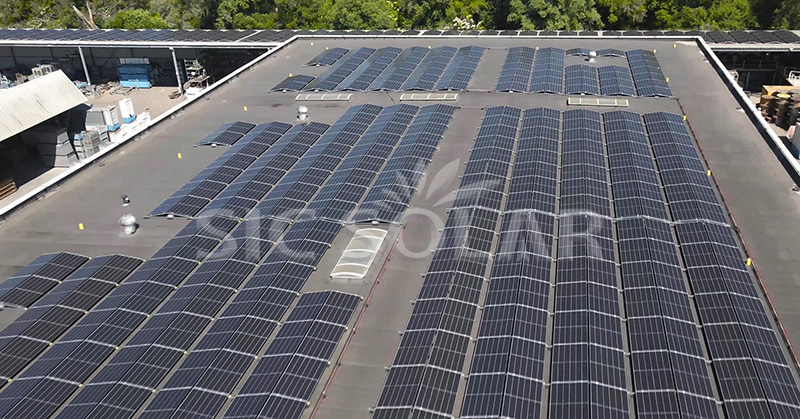Solar mounting structures are essential for securing photovoltaic (PV) panels in place, ensuring optimal orientation, stability, and longevity. The choice of mounting system depends on various factors, including installation site, structural considerations, and energy goals. Companies like SIC Solar offer a range of mounting solutions tailored to diverse needs.
1. Rooftop Mounting Systems
Rooftop systems are prevalent in residential and commercial installations, utilizing existing roof space to support solar panels. They come in several configurations:
- Rail-Based Mounts: Utilize rails attached to the roof structure, providing flexibility in panel placement.
- Ballasted Mounts: Ideal for flat roofs, these systems use weight (like concrete blocks) to hold panels in place, minimizing roof penetrations.
- Integrated Mounts: Panels are integrated directly into the roofing material, serving dual purposes of energy generation and weather protection.
SIC Solar provides robust rooftop mounting solutions designed for durability and ease of installation.
2. Ground Mounted Structures
Ground-mounted systems are suitable for installations with ample land availability, offering:
- Fixed Tilt Mounts: Panels are set at a fixed angle, optimized for the site’s latitude.
- Adjustable Tilt Mounts: Allow manual adjustment of panel angles to maximize seasonal energy capture.
- Tracking Systems: Employ motors to follow the sun’s path, increasing energy yield.
These systems are often used in utility-scale projects or areas where rooftop installations are not feasible.
3. Pole Mounted Systems
Pole mounts elevate solar panels above ground level, which can be advantageous for:
- Single Pole Mounts: Support a small number of panels, suitable for limited space.
- Multi Pole Mounts: Accommodate larger arrays, often used in agricultural settings.
Pole-mounted systems can be fixed or equipped with tracking mechanisms to enhance performance.
4. Carport and Canopy Structures
These systems serve dual purposes by providing shelter (for vehicles or walkways) and supporting solar panels. They are particularly beneficial in urban environments where space is at a premium.
5. Floating Solar Mounts
Floating PV systems are installed on bodies of water, such as reservoirs or ponds. They offer benefits like reduced land use and improved panel efficiency due to the cooling effect of water.
6. Building-Integrated Photovoltaics (BIPV)
BIPV systems integrate solar panels into building materials, such as facades or roof shingles, combining aesthetics with functionality.

Selecting the appropriate solar mounting structure is crucial for the efficiency and longevity of a PV system. Factors like site conditions, structural requirements, and energy goals should guide this choice. SIC Solar offers a comprehensive range of mounting solutions to meet diverse installation needs, ensuring reliable and efficient solar energy systems.